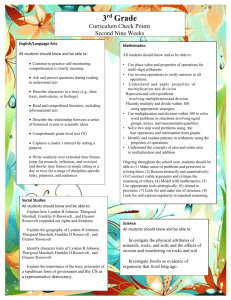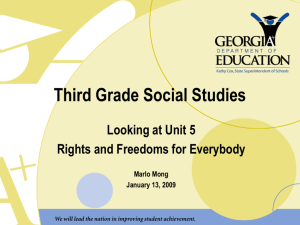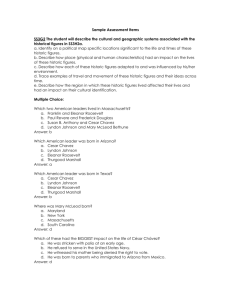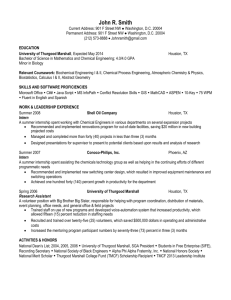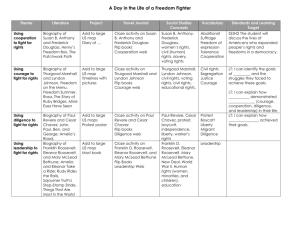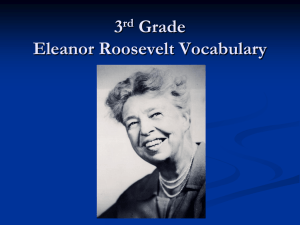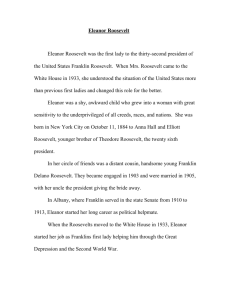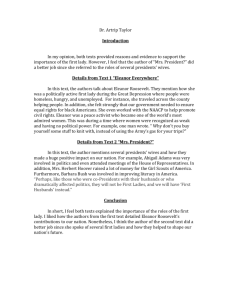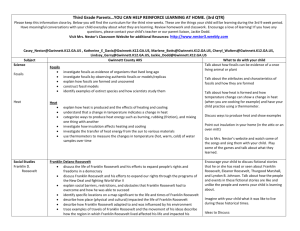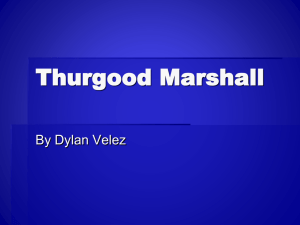Unit 1 – August/September
advertisement
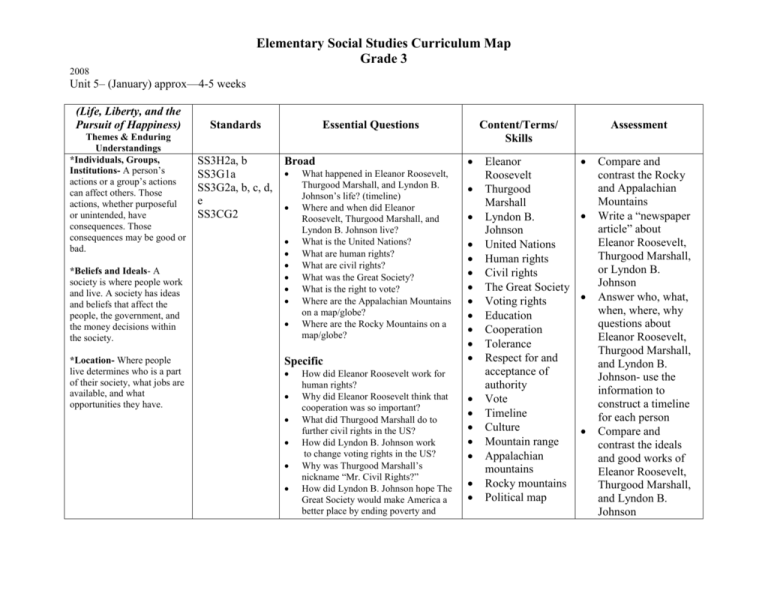
Elementary Social Studies Curriculum Map Grade 3 2008 Unit 5– (January) approx—4-5 weeks (Life, Liberty, and the Pursuit of Happiness) Themes & Enduring Understandings *Individuals, Groups, Institutions- A person’s actions or a group’s actions can affect others. Those actions, whether purposeful or unintended, have consequences. Those consequences may be good or bad. *Beliefs and Ideals- A society is where people work and live. A society has ideas and beliefs that affect the people, the government, and the money decisions within the society. *Location- Where people live determines who is a part of their society, what jobs are available, and what opportunities they have. Standards SS3H2a, b SS3G1a SS3G2a, b, c, d, e SS3CG2 Essential Questions Broad What happened in Eleanor Roosevelt, Thurgood Marshall, and Lyndon B. Johnson’s life? (timeline) Where and when did Eleanor Roosevelt, Thurgood Marshall, and Lyndon B. Johnson live? What is the United Nations? What are human rights? What are civil rights? What was the Great Society? What is the right to vote? Where are the Appalachian Mountains on a map/globe? Where are the Rocky Mountains on a map/globe? Specific How did Eleanor Roosevelt work for human rights? Why did Eleanor Roosevelt think that cooperation was so important? What did Thurgood Marshall do to further civil rights in the US? How did Lyndon B. Johnson work to change voting rights in the US? Why was Thurgood Marshall’s nickname “Mr. Civil Rights?” How did Lyndon B. Johnson hope The Great Society would make America a better place by ending poverty and Content/Terms/ Skills Eleanor Roosevelt Thurgood Marshall Lyndon B. Johnson United Nations Human rights Civil rights The Great Society Voting rights Education Cooperation Tolerance Respect for and acceptance of authority Vote Timeline Culture Mountain range Appalachian mountains Rocky mountains Political map Assessment Compare and contrast the Rocky and Appalachian Mountains Write a “newspaper article” about Eleanor Roosevelt, Thurgood Marshall, or Lyndon B. Johnson Answer who, what, when, where, why questions about Eleanor Roosevelt, Thurgood Marshall, and Lyndon B. Johnson- use the information to construct a timeline for each person Compare and contrast the ideals and good works of Eleanor Roosevelt, Thurgood Marshall, and Lyndon B. Johnson Elementary Social Studies Curriculum Map Grade 3 2008 racial injustice? What is the difference between human and civil rights? Why was the United Nations formed and how does it continue to affect countries from around the world? Which character traits did Eleanor Roosevelt, Thurgood Marshall, and Lyndon B. Johnson exhibits? How were the goals of Eleanor Roosevelt, Thurgood Marshall, and Lyndon B. Johnson alike and different? Which mountain range (Appalachian or Rocky) is bigger, longer, higher, etc…? How are mountain ranges shown on a political map? When using a political map (or an elevation map), how can you tell the elevation of a mountain range? Balanced Literature Connection: Shared reading - American Heroes Biographies Writing Workshop – see assessments list Resources Weslandia by Fleischman Don’t Know Much About the Presidents by Davis A Picture Book of Thurgood Marshall by David Adler Young Thurgood Marshall by Carpenter A Dream of Freedom- Civil Rights Movement from 1954-1968 by Diane McWhorter Eleanor Roosevelt: First Lady of the World (Women of our Time) by Doris Faber, Donna Ruff Eleanor by Barbara Cooney A Letter to Mrs. Roosevelt by C. Coco De Young Students make a poster of the rights they believe should be equal for everyone in the world Research the countries that are members of the United Nations. Hold a mock meeting of the United Nations with students representing the countries they researched Make question and answer cards about the American Heroes
